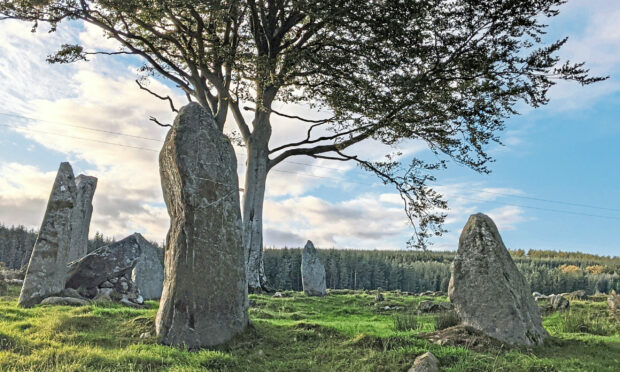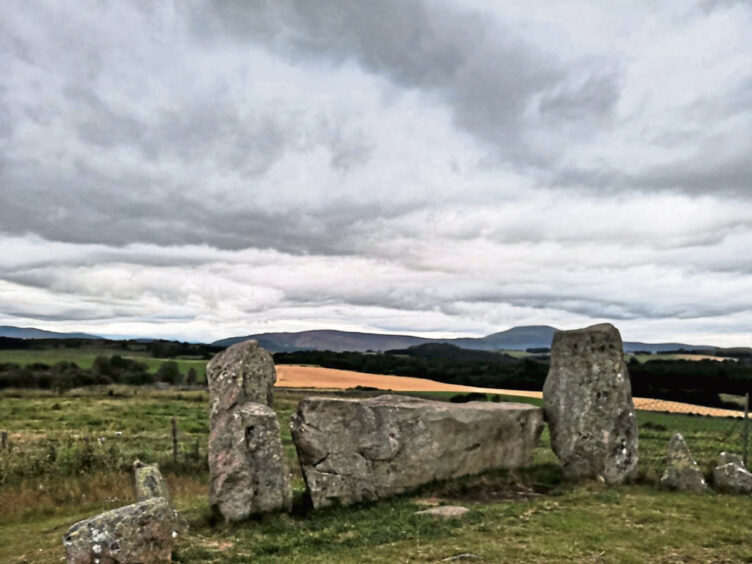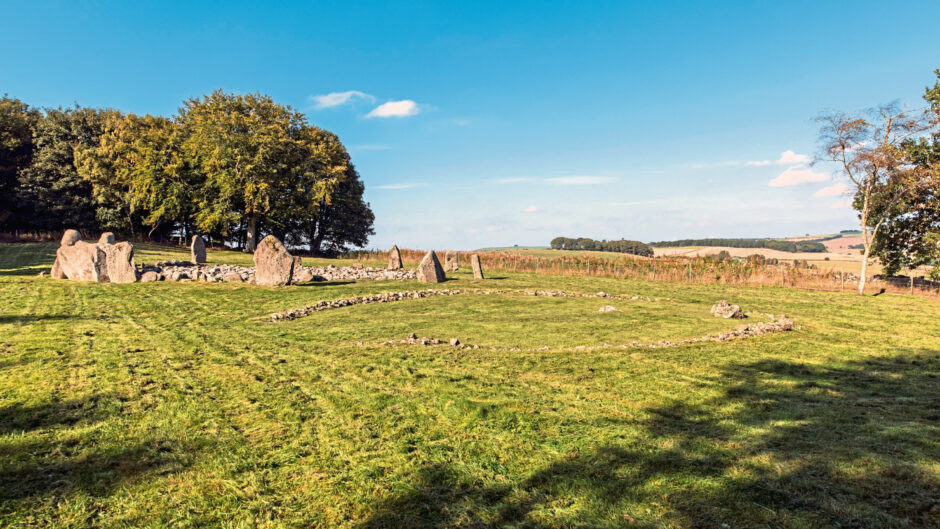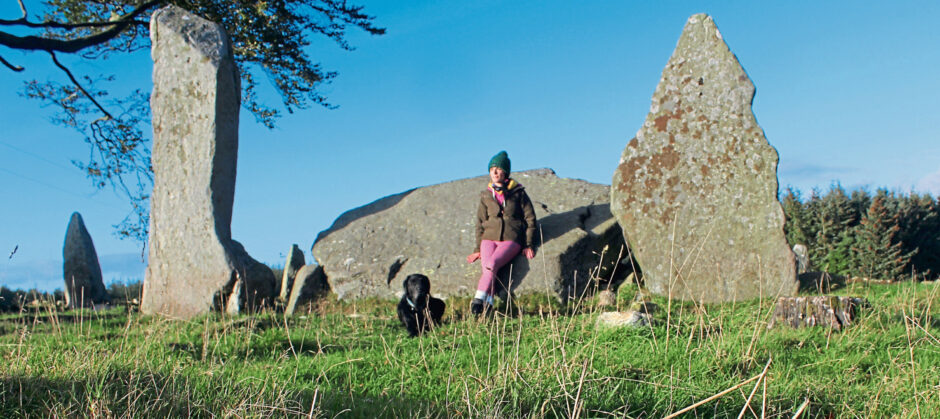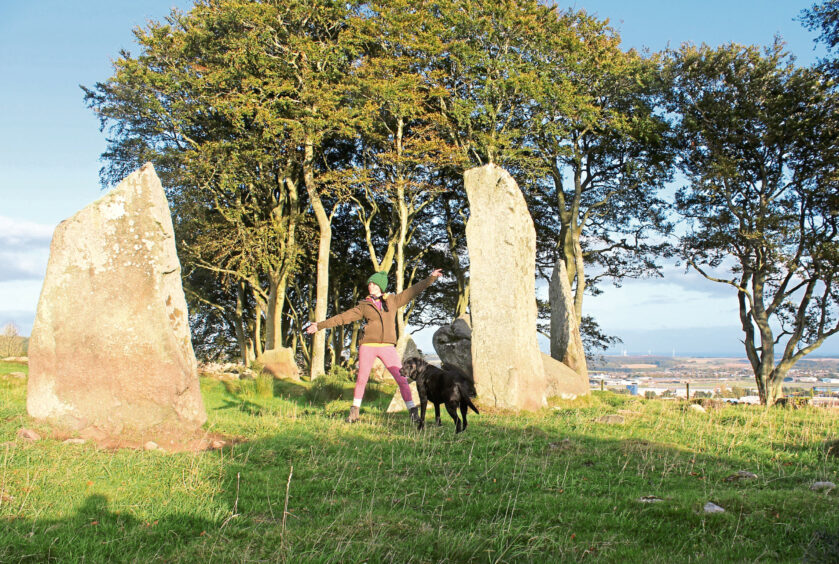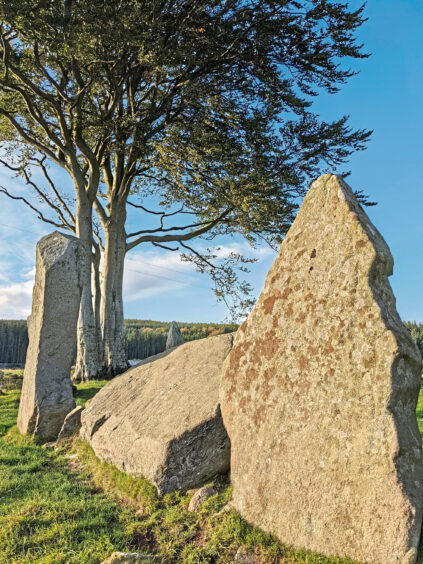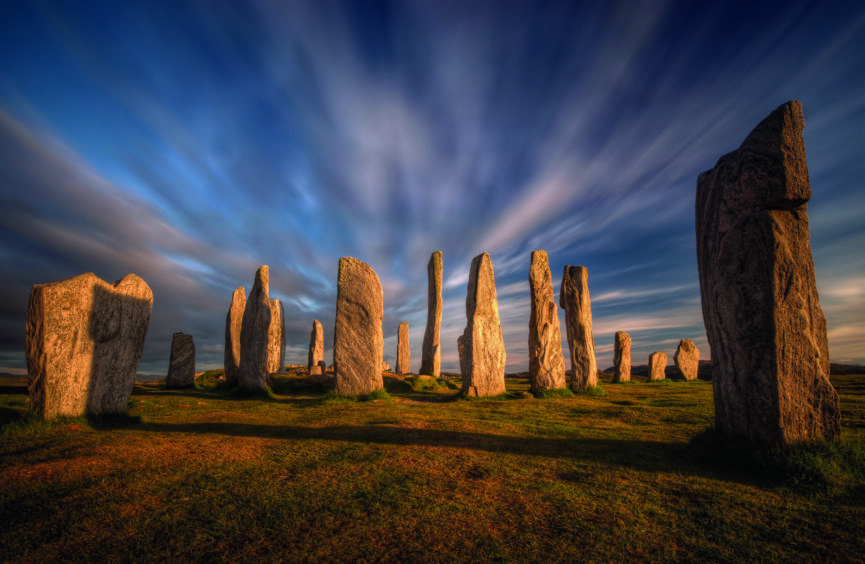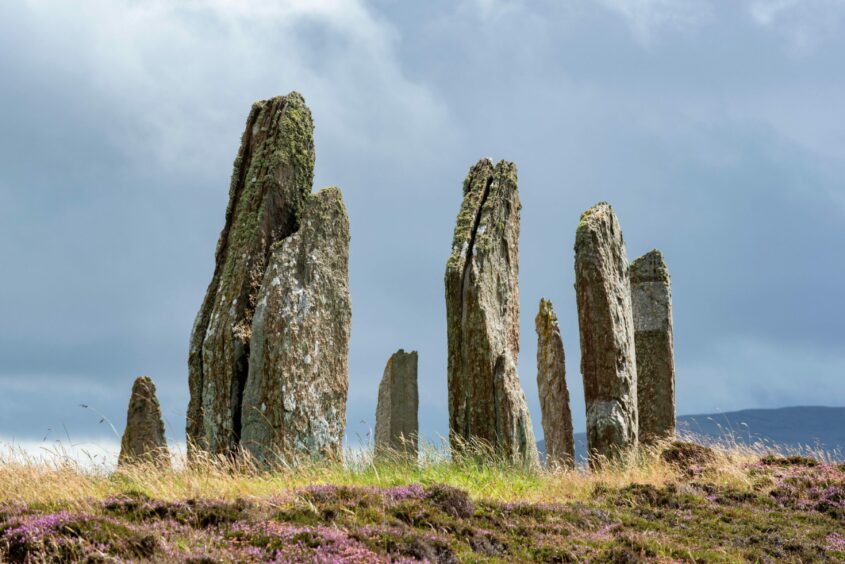Mysterious stone circles are scattered across Scotland, many dating back millennia, while some have been revealed as fake. Gayle checks out a little-known site.
I’ve always found stone circles to be magical, enchanting places.
The purpose of these enigmatic rings has long been a riddle, and perhaps one that will never be solved.
Are they sacred spaces, ceremonial places, or perhaps sites for marking the passage of time?
Archaeologists, astronomers and ethnologists all have their theories, but we’ll probably never know the complete truth.
There’s just something about them that intrigues, captivates and draws me towards them.
My obsession was born long before popular TV drama Outlander, in which the fictional stone circle of Craigh na Dun offers a portal for main character Claire to travel back in time.
There are almost 150 circles in Aberdeenshire and the region lays claim to its own unique style of circle, the recumbent stone circle, often dating back around 4,000 to 4,500 years. They’re named after the huge monolith (known as the recumbent) which lies on its side and is flanked by two upright stones (flankers).
It’s believed some stone circles are aligned to view the rising or setting of the “major standstill moon”. This happens every 18.6 years when the moon appears to move from high in the sky to low on the horizon in just two weeks.
Ancient builders are thought to have been aware of this “standstill”, where the moon appears so close you can almost touch it, and deliberately designed some circles to incorporate the observance of this rare event. The last one was in 2006.
Over the years, I’ve visited stone circles galore in Aberdeenshire and favourites include Easter Aquhorthies, Midmar, Loanhead of Daviot, Clune Wood, Tomnaverie and the Nine Stanes of Mulloch.
Midmar, in the burial-ground beside Midmar Kirk, is truly striking, with its tall, fang-like flanker stones towering over the recumbent like watchmen. Meanwhile Tomnaverie boasts two “cupmarks” carved into its recumbent stone.
There’s something ethereal about Loanhead of Daviot’s setting, high on a hill and surrounded by woodland. And if any stone circle was going to open up a time portal a la Outlander, it’s this one!
Its huge recumbent stone has been split in half by frost…or perhaps another theory is that it was ripped apart during some wild battle of the Gods! I camped there one summer solstice and boy, was it a magical experience.
When a pal mentioned the existence of Tyrebagger stone circle, a few miles from Aberdeen, my interest was piqued. I’d never heard of it – and nor had many other folk – so I decided to do a recce.
I parked in Kirkhill Industrial Estate, as suggested by my friend, and wandered around like a lost soul looking for some kind of entrance to a farm track. (Apparently you can also access the circle from Kirkhill Forest on foot or by bike).
Spotting an overgrown path, I fired up it hoping for the best. Once on the farm track, I had no clue which way to turn and asked at a house where a friendly woman pointed to a field in the distance. From there, it took about 15 minutes to reach the site.
It’s a truly impressive – and rather surprising – vision, perched high on a summit, in a copse of beech trees.
It’s beautifully rural, but juxtaposed with the rumble of the nearby Aberdeen Western Peripheral Route and views of the airport and industrial landscape below.
Nonetheless, the circle’s setting has an overwhelming ambience and sense of the ethereal; of the magical.
It’s a real gem that has survived largely unspoiled, unlike many other stone circles which have been damaged or destroyed.
While most circles date back millennia, there’s one in Aberdeenshire less than a quarter of a century old.
Archaeologists first thought the recumbent stone circle at Leochel-Cushnie was thousands of years old but were left red-faced in 2019 when it was revealed a mischievous farmer built it as a replica in the mid-1990s. Oh dear.
Of course, stone circles and prehistoric sites are scattered all over Scotland, and many have some rather grisly histories.
Balfarg Riding School Henge, which had an adjacent mortuary enclosure that formed part of a ceremonial complex with Balfarg Henge near Glenrothes, is one such site. The reconstruction takes the form of a sub-rectangular ring of posts with an inner double row of thicker posts.
It’s thought these posts supported platforms on which the dead were laid out to be picked apart by scavenging birds before burial. Grim!
Perhaps the big daddy of all Scotland’s stone circles is Callanish on Lewis, thought to have been erected 4,500 years ago as an astronomical observatory.
Meanwhile, the Ring of Brodgar, a Neolithic henge and stone circle near Stromness in Orkney, was designated Unesco World Heritage Status in 1999. It’s thought to be at least 4,000 years old.
Visiting in 1846, Scottish geologist Hugh Miller wrote that the stones “look like an assemblage of ancient druids, mysteriously stern and invincibly silent and shaggy”.
To some, these circles are a legacy left by our ancestors; to visit them is to connect with the past.
You might not be transported to another world when you visit, but every stone circle offers a unique connection to the past.
